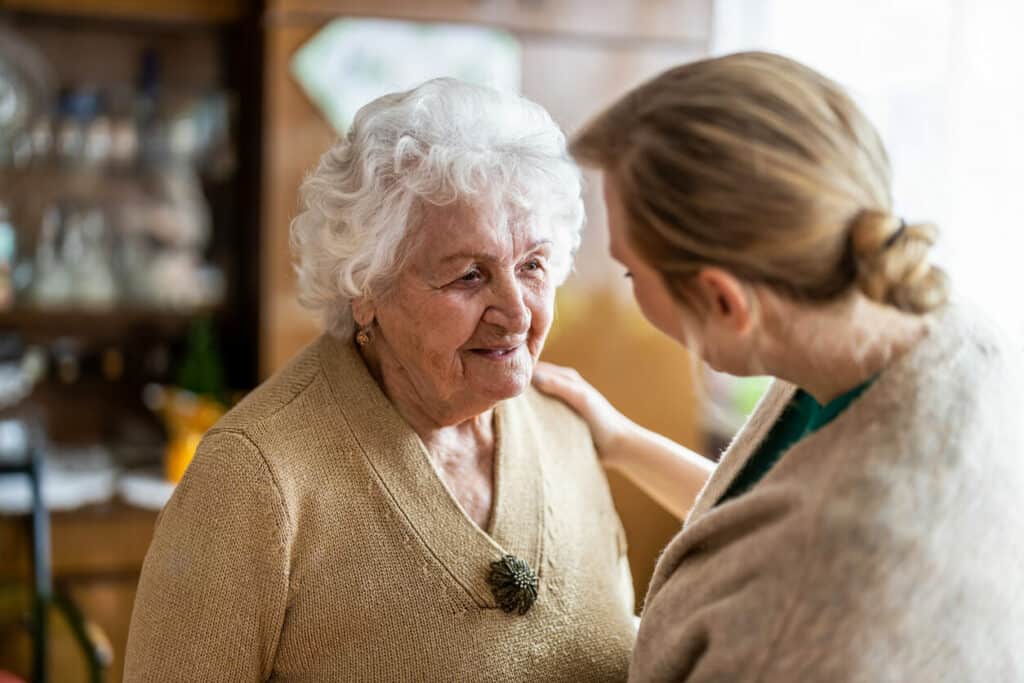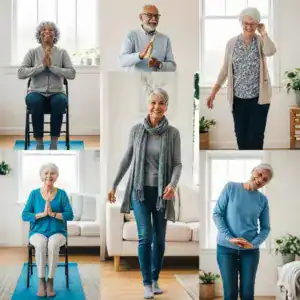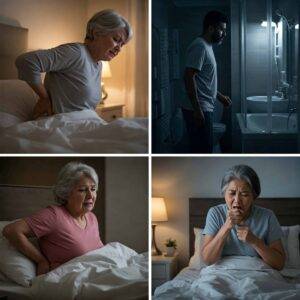
Almost every household in the US has a volunteer family member taking care of a senior parent or relative. We’re seeing the same pattern outside of the US as the demand for quality care swells to reach a point of disequilibrium — where the supply for care can’t meet the extremely high demand for it. Enter the family caregivers!
The latest caregiver statistics in 2023 highlighted the growing prevalence of unpaid caregivers around the world. It proves that the healthcare system needs reformations to keep up with the need for care for older people and those living with disabilities.
Let’s take an overview of the important figures related to caregiving and family caregivers to better understand where it is heading and the role you, as a family caregiver, play in filling the gap between the demand and supply for care.
Key Statistics About Caregiving in the US From 2015 to 2023

1. Most unpaid caregivers from 2015 to 2017 were family members ages 45 and below.
Unpaid caregivers were categorized into three age brackets: less than 45, 45 to 64, and 65 years and older.
Based on caregiver statistics in 2015, family caregivers aged 45 years old and below comprised 44.8% of unpaid caregivers in the US — the highest figure among the three groups. Approximately 35% were 45 to 64 years old, and almost 21% of caregivers were 65 and older.
Even without this fact, it’s apparent, and we see it today, that most family caregivers are members of the younger generation, specifically the millennials and Gen Z, who are now around 11 to 42 years old.
2. More than half of informal caregivers in the US from 2015 to 2017 were mostly women.
The average percentage of female caregivers in the US throughout the 45 states was 58.1% from 2015 to 2017. In the same caregiving statistics in 2015, it was noted that Maryland has the highest rate of female caregivers with 62.6%, while Alaska has the lowest with 53%.
The family caregiver demographics mainly consist of adult daughters and female friends who care for senior family members. Nobody can tell the exact reason why this is. Some surveys cite that male family members are as committed and driven to fulfill their family responsibilities as female members.
However, since ancient times, women have played the key role of taking care of the entire family’s well-being while men have been providers. This may have an effect on why we see more female caregivers today. They’re motivated by their supposed role within the family.
3. A whopping 15.7 million family caregivers provided care for people with Alzheimer’s and other dementias.

Alzheimer’s and other types of dementia are dubbed the next global epidemic and recorded by the World Health Organization as the seventh leading cause of mortality and the primary cause of disability and reduced independence for older individuals.
According to Alzheimer’s Association caregiver statistics in 2015, family caregivers provided a
total of 17.9 billion unpaid care hours, roughly averaging 21.9 hours each week in 2014 for those with cognitive disorders. These unpaid hours of care have an economic value of $217.7 billion.
How do these unpaid hours of care affect family caregivers, especially women?
- It means that 42% of women caregivers can’t get a job because caregiving duties take up several hours of their day.
- If they take a job, they are most likely employed hourly, like four hours a day, and not secure full-time employment.
- Due to multiple responsibilities, they’re also at a higher risk of mental health issues, which has financial implications for the family.
Caregiver Statistics in 2018
4. Twelve percent of caregivers who were parents were also providing unpaid care for another adult.
In a Pew Research Center analysis of caregiving in the US published in 2018, more than 1 in 10 American adults were multigenerational caregivers, juggling child care and elder care. On average, they spent over two and a half hours providing care without pay.
We continue to see the same trend today, where family caregivers struggle to balance parenting, career, and senior care responsibilities. In most cases, this struggle for balance has led to caregiver burnout, depression, and health concerns for the caregivers.
Caregiver Statistics in 2019

5. A survey of 1,392 caregivers found that 16% of the care recipients were cared for due to “old age.”
A profile of the care recipients in 2019 revealed that the top reason for needing care was because of “old age.” Meanwhile, about 12% of these care beneficiaries sought care for mobility support and 11% for Alzheimer’s care.
This data proves that supporting senior relatives throughout their golden years is the driving motivation for most caregivers. Since aging poses significant challenges, such as safety risks due to limited mobility, trouble completing daily tasks, and reduced independence, caregivers want to assist their elderly loved ones in whatever ways possible.
This support can be in the form of giving medication reminders, providing social and emotional support, and helping complete house chores.
Caregiver Statistics in 2020
6. The number of family caregivers soared from 43.5 million in 2015 to 53 million in 2020.
More than 1 in every 5 Americans, or approximately 53 million individuals, provided care for a senior loved one or a child requiring special needs in 2020.
Compared to 2015, when only 18.2% of the American population were caregivers, this ballooned to about 21.3% in 2020, equating to 9.5 million more caregivers in just seven years.
As the world grays and more people enter retirement, we expect to see higher demand for caregivers.
7. Of all caregivers, 41.8 million were providing care for people ages 50 and older.

People say America is graying — this is true, as 16.8% out of 19.2%, equivalent to almost 42 million adult caregivers, were caring for people ages 50 and older.
The rest comprising 2.5%, were caregivers to care recipients who were between 18 to 49 years old.
Considering that the global care demand will continue to skyrocket year after year, will there be enough paid and unpaid caregivers to meet the care needs of older people in the future? Even today, the healthcare industry is concerned about how to close the caregiver shortage gap.
One report revealed that there will be a shortfall of American care workers by 151,000 in 2030 and by an even higher count of up to 355,000 in 2040. One solution experts see for this problem is leveraging smart and assistive technology, such as in-home monitoring and home security systems, to support older people to live self-sufficiently.
Caregiver Statistics in 2021
8. Unpaid caregivers provided an enormous $600 billion worth of care in 2021.
The economic value of unpaid care in 2019 hit $130 billion. In 2021, it racked up to $600 billion, equivalent to 36 billion unpaid caregiver hours. The American Association of Retired Persons (AARP) reported that roughly 38 million caregivers provided about 18 hours of care each week.
A person works 40 hours on average per week, and if you add 18 hours more for caring obligations, we can estimate that family caregivers with full-time jobs work at least 58 hours weekly. This setup can have adverse health consequences on caregivers who juggle work and caring obligations but can’t balance them in a way that doesn’t compromise their well-being.
Frequently Asked Questions

How many family caregivers are in the US?
The latest available data from 2020 documented that there were 53 million family caregivers or 1 in every 5 Americans.
There is no data on the estimated number of family caregivers in 2023, but we know there are at least 53 million.
Experts project that more than 1 in 5 Americans will be 65 and older by 2030, and 70% of these people will require some form of long-term care and support. Relatively, we expect the number of caregivers in the US to also rise.
What percentage of millennials are caregivers?
There are over 10 million millennials who are unpaid caregivers, according to AARP’s caregiving statistics. A different source cited that out of 40 million family caregivers in 2018, roughly 1 in 4 belonged to the millennial generation.
Meanwhile, the most updated AARP report describing millennial caregivers revealed that millennial caregivers are often single, with an average age of 30.2 years old. They hold jobs but work on an hourly basis for about 37 hours each week.
They also find caregiving a moderately to highly emotionally stressful responsibility. In fact, about half of millennial caregivers feel that they have no option but to take on the role of caring for their loved ones.
How many hours do caregivers spend providing care each week?
Thirty-one percent, or 1 in every 3 caregivers, has provided at least 20 hours of care each week. It’s estimated that almost 54% of caregivers have supported someone’s long-term care needs for at least 24 months.
Caregiving can be overwhelming, especially if the person you care for requires comprehensive monitoring and supervision. For instance, a senior with moderate dementia may still be able to stay in their homes if their symptoms are manageable.
However, remaining at home implies that the primary caregiver, who is often a family member and has a job, may need to spend more hours on care. At the end of the day, most of these caregivers are exhausted and emotionally drained. This is another reason why self-care for caregivers is advocated.
What percent of family caregivers provide care for a parent?
Based on family caregiver statistics, almost 9 in 10 caregivers provide care for a relative, with 50% — the highest percentage of caregivers — providing care for a parent or parent-in-law.
Here is the rest of the information about caregivers and their beneficiaries:
- 12% of caregivers are caring for a spouse or a partner
- 8% are caring for a grandparent or grand-parent-in-law
- 6% are providing adult childcare
- 10% are providing care to a neighbor or a friend
Should You Be a Caregiver?

These data give us a grim glimpse of the world of caregiving, like how nearly 67% of family caregivers, based on statistics, experience at least one mental or behavioral symptom from caregiving.
More than its downside, a considerable number of caregivers still pursue caregiving because it gives their life meaning and purpose, and it brings positive feelings to be able to make a difference in a loved one’s or other people’s lives.
So if you are on the fence about whether you should become a caregiver knowing that it can be a challenging job, we at Amy’s Eden encourage you to give it a try. While caregiving can be exhausting with all its ups and downs, it can be a life-changing experience. When your family experiences a health crisis, becoming a caregiver will naturally increase your empathy, patience, and other qualities and change your perspective on relationships and life.
Amy’s Eden is always looking for passionate caregivers who want to make an impact in the lives of the people they care for. If you want to give it a go, please contact us here.
What These Caregiver Statistics Mean to You
By looking at these caregiver statistics from 2015 until 2023, you can see that the number of caregivers around the world continues to rise relative to the skyrocketing demand for the care of older people and those with health conditions like dementia and Alzheimer’s.
As most caregivers provide care for several hours a week while also balancing other responsibilities, such as child care and career, burnout eventually becomes inevitable. If you’re in the same boat, know that there are resources and support programs available for caregivers like you.
Amy’s Eden Will Help You Make Caregiving Rewarding

Our team at Amy’s Eden strongly advocates for caregiver well-being in the form of proper and ongoing caregiving training to arm them with the right knowledge to manage stress, cope with various caregiving challenges, and develop resilience.
It feels rewarding to have an opportunity to care for your senior loved one, but if it starts to pose some health risks to you, you should team up with us! Amy’s Eden has certified and approachable caregivers to help you meet your loved one’s care needs at home.
If you’re caring for a loved one with dementia and thinking of transitioning to a new home, we encourage you to schedule a tour of one of our assisted homes. Unlike larger assisted facilities, they can receive adequate and personalized care as we have only two residents at our homes. Contact us to learn more about how we can take some caregiving responsibilities off your shoulders.
Sources:
National Alliance for Caregiving
National Alliance for Caregiving
Statista
Statista




